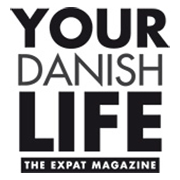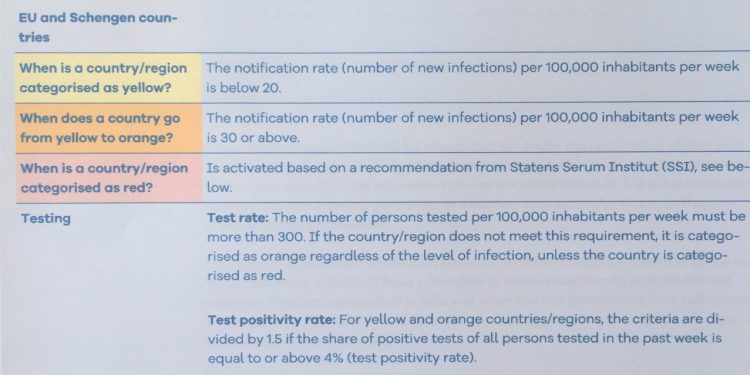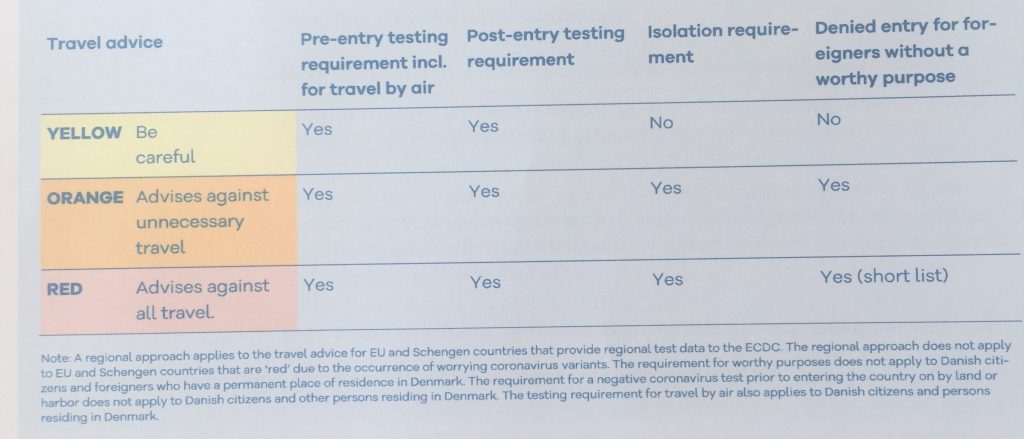Latest travel update: who can come to Denmark and where can you go?
On 21 April, Denmark introduces a range of different models for entry to the country, as well as travel to other countries, the model is complicated and requires some investigation to understand. However, nothing at present opens the borders to a larger extent.
The article continues below.
By Bente D. Knudsen
If you had hoped for a great change in the Danish travel regulations as of 21 April, you will be sadly disappointed. At present not much changes, the country remains closed to travellers from most of the world, with a few exceptions, unless they can enter under a worthy cause rule.
The good news is that more can enter under the worthy cause rules, notably exchange students, students at Danish højskoler and efterskoler, partners, spouses and children of a Danish citizen who lives abroad and travel together to Denmark, those who own a summerhouse or have a boat moored here.
Take note that the changes describe below will be updated on the Foreign Office website on the 21 April, so if you check today 20 April, nothing will have changed.
So, what changes?
The article continues below.
As of 21 April, Denmark reintroduces the regional model for travel restrictions which had been in use until the country closed down again.
A range of factors will take into account which colour a country will get, with automatic adjustments based on amongst other notification rates.
The colour will change the Danish Foreign Ministry’s evaluation of whether travel to the country should be advised or not and what the entry restrictions and requirements for testing and isolation after entry into Denmark for travellers from the country in question will be.
The new model is based on a range of phases running from 21 April until 26 June 2021.
In phase one of the reopening agreement from 21 April, the Danish model for travel restrictions for EU and Schengen countries will be based on notification rates meaning that if there are extensive entry restrictions for travellers from Denmark, this will affect the colours of the Danish Ministry of Foreign Affairs’ travel advice.
All countries turn from red to orange, this makes no difference to the current situation as this means that most of the world’s countries/regions will continue to be orange (all unnecessary travel is advised against) in the Danish Ministry of Foreign Affairs’ travel advice.
A new red risk assessment will be introduced to handle the occurrence of coronavirus variants of concern.
From 21 April, entry from the following countries/regions of the EU and Schengen countries will be possible without any worthy purpose requirement: Iceland (the whole country) and four Norwegian regions: Nordland, Trøndelag, Troms and Finnmark, travellers from these countries/regions will be exempted from the isolation requirement after entry.
However travel to these countries and regions is still disadvised due to restrictions imposed on travellers from Denmark in these countries.
The colours in the model for the EU and Schengen countries will be updated weekly on the basis of data on the latest notification rates from the European Centre for Disease Prevention and Control (ECDC) and Statens Serum Institut. Each country’s entry restrictions for Danish travellers will also be included in the assessment.
Regional breakdowns are only done in the countries that report regional data to the ECDC.
The article continues below.
Outside of the EU/Schengen, the travel restrictions are updated based on the EU’s list of third countries and from 21 April this means that travellers from Australia, New Zealand, Singapore, South Korea and Thailand may enter Denmark without restrictions.
BUT you cannot travel to these countries from Denmark as they remain orange (all unnecessary travel is advised against) due to significant entry restrictions on Danish travellers.
As something new, a red risk assessment has been incorporated in the model for countries with a particularly worrying infection development, including the development of COVID-19 variants of concern. The decision to categorise a country as red is made by an inter-ministerial task force based on a public health assessment from Statens Serum Institut. As a rule, the red risk assessment is performed at national level. However, this may be deviated from in exceptional cases.
From 21 April, the following countries will be red:
Bangladesh, Botswana, Brazil, Eswatini, Lesotho, Malawi, Mozambique, South Africa, Zambia and Zimbabwe, as well as the region of La Réunion, which is an overseas French territory off Southeast Africa.
All travel to red countries is advised against to limit the risk of bringing new coronavirus variants of concern into Denmark. The entry restrictions for the countries in question will follow the same approach that currently applies to South Africa, with a stricter list of worthy purposes for entry into Denmark.
Also take note that even if the country opens for travel from a few selected countries there will still be requirements for testing and isolation after entry into Denmark.
A range of different exemptions apply to the testing and isolation requirements including special rules for the border regions, transport of goods, seafarers, transport staff, transit to Bornholm, travellers visiting their own remote holiday home in the Nordic region and business travellers.
Danish residents and citizens with a Danish passport arriving from a yellow country will be exempt from the requirement for isolation after entry into Denmark.
The list of worthy purposes for entry from orange countries/regions is extended.
If a country or region changes from yellow to orange while you are away, no isolation requirement will apply on your return unless you stay in the country for more than 15 days.
The article continues below.
Phase two is to be implemented on 1 May, but will be subject to negotiations between the Government and the opposition parties prior to its implementation. In this phase fully vaccinated Danish residents and foreigners, amongst other tourists, who are residents of a yellow or orange EU/Schengen country may enter Denmark with no requirements for testing or isolation.
To be implemented solutions must be found at the Danish borders to ensure smooth travel without massive border controls. Further, for those required to present a negative test to be able to enter the country, a test must be 48 hours old instead of the present 24 hours old.
Phase three is to be implemented on 14 May, again subject to negotiations as above. The aim is to increase the incidence rate for yellow and orange countries from the current 20/30 to 50/60 per 100,000 inhabitants and to abolish the worthy purpose rule for travellers who are residents in orange countries from within the EU/Schengen.
Testing and isolation will remain mandatory unless they have been fully vaccinated or can present evidence of a prior COVID-19 infection.
Phase four is to be implemented on 26 June or when the EU has implemented a common coronavirus passport showing either a vaccine, negative test or a former infection.
For those travelling only with a negativ covid-19 test in their passport, requirements for testing and isolation upon arrival will be maintained as well as possible other travel restrictions, this is to be determined in negotiations between the Danish Government and the opposition parties.
Questions about worthy purposes for entry into or transit in Denmark go to the Police Hotline +45 7020 6044 or more information at coronasmitte.dk
The article continues below.
You can find all the travel guidelines at the site of the Danish Foreign Office here and information about travel to Denmark at the site of the Danish Police here.
Support our magazine with a contribution of any size
We do not want to put up a pay-wall, so we need your support and if you find our content relevant and worthwhile, we would value any contribution, however big or small, as a token of your appreciation of our efforts.
How to support:
Transfer any contribution to our bank account at: Your Danish Life/ Danish Expat Media Aps
Danske Bank Account number: 3409 11405673
IBAN: DK68 3000 0011 4056 73
or MobilePay to 2144 1224
Message: Support



